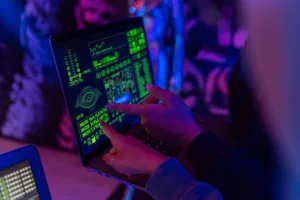
The security operations center (SOC) is undergoing a radical transformation through AI and cloud-native detection technologies. Traditional SOC models are proving inadequate against modern multi-vector attacks, with Palo Alto Networks’ Unit 42 reporting that 84% of incidents now target multiple fronts simultaneously. Autonomous security operations leverage machine learning to reduce alert volumes by 98% while improving threat detection accuracy, representing a fundamental shift in cybersecurity defense postures.
The Collapse of Legacy SOC Models
Traditional SOC architectures built on static signature-based detection and manual triage are collapsing under modern threat volumes. The 2025 Unit 42 Global Incident Response Report reveals three critical vulnerabilities in legacy approaches:
- Siloed systems prevented detection despite existing evidence (75% of cases)
- Unmonitored cloud assets enabled 40% of cloud incidents
- Excessive privileges facilitated lateral movement in 41% of attacks
Clay Brothers, Senior Director at Palo Alto Networks Unit 42, notes: “Given the volume and sophistication of threats, that old SOC model is starting to show real issues. Today, especially with AI, it’s so easy to morph an attack to avoid a static detection.”
Cloud-Native Detection Architecture
Modern autonomous SOCs shift from manual signatures to cloud-native detection systems. Palo Alto Networks’ Cortex XSIAM platform exemplifies this approach with continuous updates from 100+ threat researchers and real-time propagation of detection logic across all customers.
# Example cloud-native detection pipeline
def evaluate_threat(indicator):
threat_intel = query_global_tikr(indicator)
behavior_analysis = assess_attack_patterns(indicator)
confidence_score = calculate_confidence(threat_intel, behavior_analysis)
if confidence_score > THRESHOLD:
auto_remediate(indicator)
generate_incident_report()
return confidence_scoreKey advantages include elimination of manual signature maintenance and reduction of Mean Time to Detect (MTTD) from hours to minutes.
Measurable Efficiency Gains
Autonomous SOCs demonstrate quantifiable improvements over traditional models:
| Metric | Traditional SOC | Autonomous SOC | Improvement |
|---|---|---|---|
| Alerts Requiring Review | 3,000/day | 75/day | 98% reduction |
| Incident Resolution Time | 4-8 hours | 15-30 minutes | 85% faster |
| False Positive Rate | 40-60% | 5-10% | 80% reduction |
Palo Alto Networks reports their AI implementation provides the equivalent of 65 full-time employees through task automation, enabling analysts to shift from reactive triage to proactive threat hunting.
Implementation Roadmap
For teams transitioning to autonomous operations, SentinelOne’s maturity model provides a practical framework:
- Level 0: Manual operations with single-source detection
- Level 1: Rules-based automation (SOAR)
- Level 2: AI-assisted investigations
- Level 3: Partial autonomy (LLM-generated detection logic)
- Level 4: High autonomy (agentic response systems)
Critical success factors include phased rollouts with parallel run periods and continuous validation of AI decision-making.
Organizational Impact
The autonomous SOC model addresses key operational pain points:
For Defense Teams
- Automated triage reduces alert fatigue
- Integrated threat intelligence improves detection accuracy
- Cloud-native architecture eliminates signature lag
For Offensive Teams
- AI correlation detects novel attack patterns
- Behavioral analysis identifies living-off-the-land techniques
- Automated response accelerates containment
The Future of Security Operations
The transition to autonomous security operations represents an evolutionary leap in cybersecurity defense. As threat actors leverage AI-assisted attacks, organizations must adopt machine-speed detection and response capabilities. Future developments will likely focus on explainable AI for security decision-making and predictive threat prevention.
References
- Clay Brothers, SOC and Awe — How Autonomous Security Is Changing the Game. Palo Alto Networks Blog, 2025-03-18.
- SentinelOne, Autonomous SOC Is a Journey, Not a Destination. 2024-12-18.
- Shahar Ben Hador, SOC 3.0 – The Evolution of the SOC and How AI is Empowering Human Talent. The Hacker News, 2025-02-26.
- Shannon McFarland, How to Build Your Autonomous SOC Strategy. LinkedIn, 2024-05-31.






